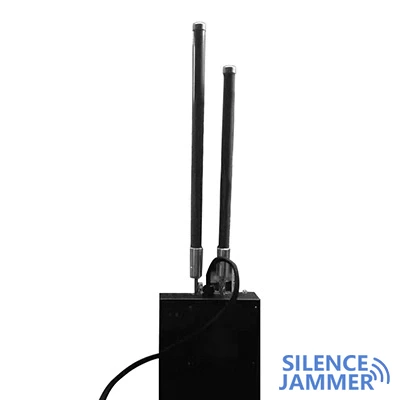UK Sentinel reveals widespread use of GPS signal blockers
A groundbreaking study by Acpo (the Association of Chief Police Officers) and the National Physical Laboratory has revealed widespread illegal use of GPS signal jammers in the UK. The Sentinel project recorded more than 60 incidents of GPS jamming over six months of monitoring, showing that these jamming devices pose a potential threat to public safety. The research team noted that the devices are mainly used by drivers who do not want their movements to be tracked, especially those with GPS trackers, who try to cover their tracks with signal jammer blockers.

Sentinel study: Groundbreaking monitoring system reveals jamming
For the study, the Sentinel team used 20 roadside monitors specifically designed to detect whether jamming devices were used by passing vehicles. According to project leader Charles Curry, the system is considered a unique technological innovation in the world. The sensors of the Sentinel system can record the occurrence of interference signals, which helps the research team analyze the source and pattern of these signals.
Curry pointed out that although the analysis is still ongoing, preliminary data shows that there may be 50 to 450 GPS interference incidents in the UK every day. Most GPS signal jammers are small portable devices with an interference range of 200 to 300 meters. Although these devices are not high-powered, since the GPS satellite signals themselves are weak, even low-power jammers can effectively block GPS signals.
The hazards of GPS jammers: from vehicle tracking to critical systems
- In the logistics industry, many companies often install GPS trackers on their vehicles to ensure transportation safety, especially vehicles carrying valuable goods. However, the study found that most GPS signal jammers are used to prevent these tracking devices from working properly, thereby covering the whereabouts of transportation vehicles. Drivers using signal blockers attempt to evade company monitoring in this way.
- Such devices not only affect vehicle tracking, but may also endanger other critical systems that rely on GPS technology. Professor David Last of the Royal Institute of Navigation in the UK explained that the energy emitted by GPS satellites is only equivalent to the power of car headlights, but it needs to cover half of the earth's surface. Therefore, even a small signal jammer can easily interfere with GPS signals by broadcasting signals on the same frequency channel as GPS, making it unable to receive data normally.

Security risks brought by GPS blocker devices
- The abuse of signal blockers also poses a serious threat to other critical infrastructure that relies on GPS. For example, in power grids and communication systems, GPS signals are often used as a source of precise time information. In addition, high-speed transactions in financial markets also rely on GPS time synchronization technology to ensure the accuracy of transactions.
- The research of the Sentinel project also revealed potential threats to the aviation and navigation fields. Many light aircraft and ships use GPS navigation systems. If these systems are interfered with, it may cause navigation errors and safety accidents. This not only causes trouble for ordinary vehicles, but also may interfere with national security and public service systems.
Case analysis: Warning of the interference incident at Newark Airport
The Sentinel research is not an isolated incident. As early as 2009, Newark Airport in the United States found that its GPS system was being continuously interfered with. The final investigation showed that the problem originated from a GPS signal jammer used by a truck driver. This incident once again emphasized the destructive impact of GPS interference on critical systems. As technology advances, jamming devices become more hidden, and regulators need to continuously improve detection technology to ensure that public safety is not affected.
Strengthening supervision: the future direction of the Sentinel Project
In order to deal with the threat of GPS jammer devices, the partners of the Sentinel Project called for strengthening relevant legal supervision. Bob Cockshott of the Information and Communication Technology Knowledge Transfer Network pointed out that these blockers are currently ubiquitous on the Internet and can be easily obtained by ordinary people, but the current laws do not have enough control over them. He believes that the next step of the Sentinel Project should be to develop more powerful technical means to help law enforcement agencies detect and locate drivers who are using signal jammers.
Curry said that a major achievement of the Sentinel research is to help the police lock on the specific users of jamming devices. This not only improves the efficiency of law enforcement, but also provides valuable experience for future technology development. He further suggested that the next step should be to continue to optimize the Sentinel monitoring system so that it can play a more effective role in law enforcement operations and combat the abuse of blockers.




